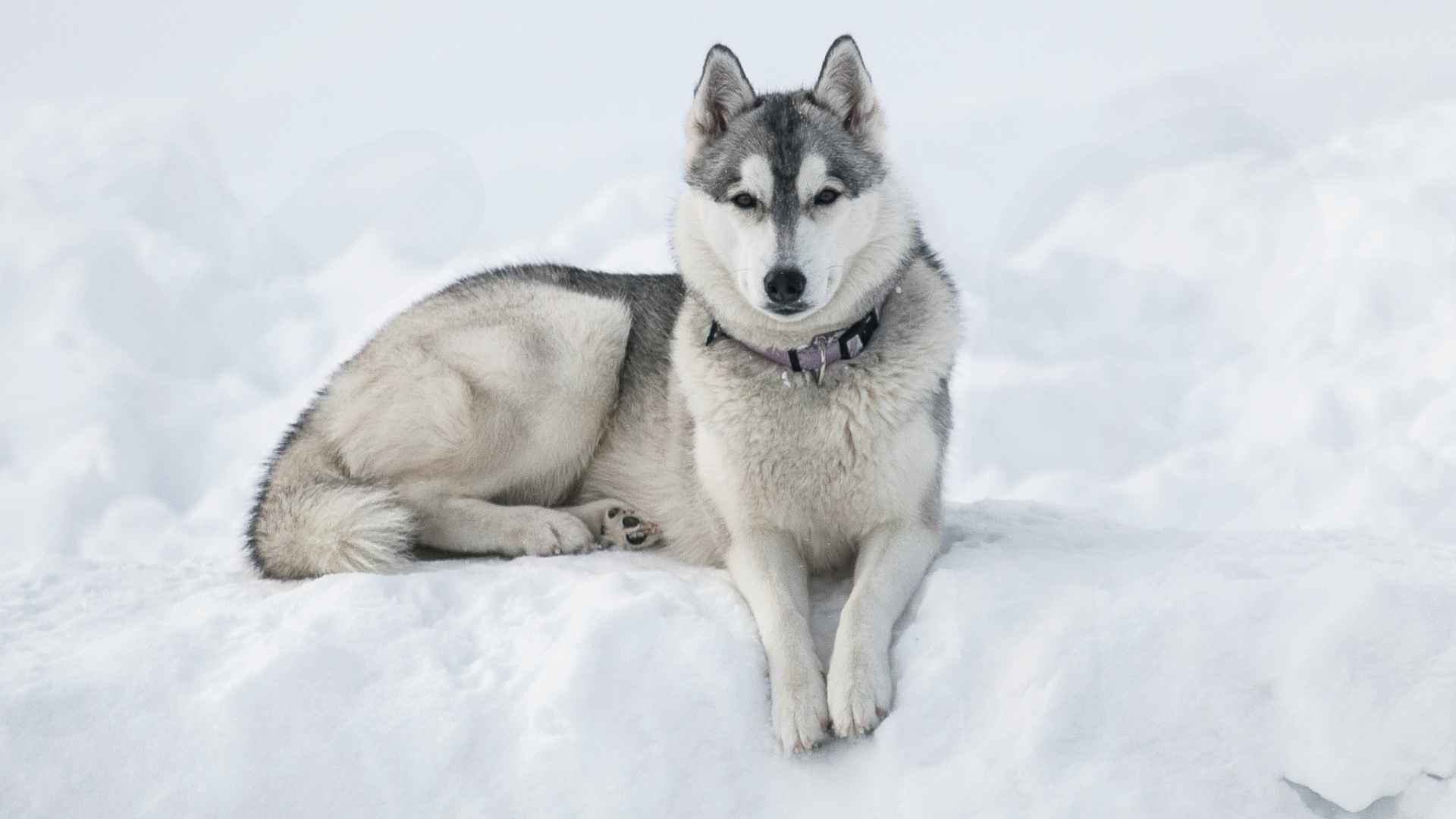Not all dogs are built for the snow. While some shiver at the first sign of frost, others seem right at home bounding through snowdrifts. What makes the difference? It’s often down to coat structure, body composition, and ancestral purpose. Dogs developed in colder regions tend to have a thick double coat, sturdy builds, and low-slung tails that they can curl over their faces for warmth during sleep.
According to PetMD, temperatures below 45°F (7°C) can start to impact some dogs, especially smaller or short-haired ones. And once it drops below 20°F (–6°C), even thick-coated dogs can be at risk of frostbite, especially on their ears, tails, and paws.
Dogs originally bred to work in snow, herd livestock in the mountains, or haul heavy loads across frozen terrain have built-in traits that help them regulate body temperature, conserve energy, and stay warm in freezing conditions. These aren’t just cute quirks—they’re survival traits rooted in generations of adaptation.
Dog Breeds Perfect For Cold Climates
1. Siberian Husky
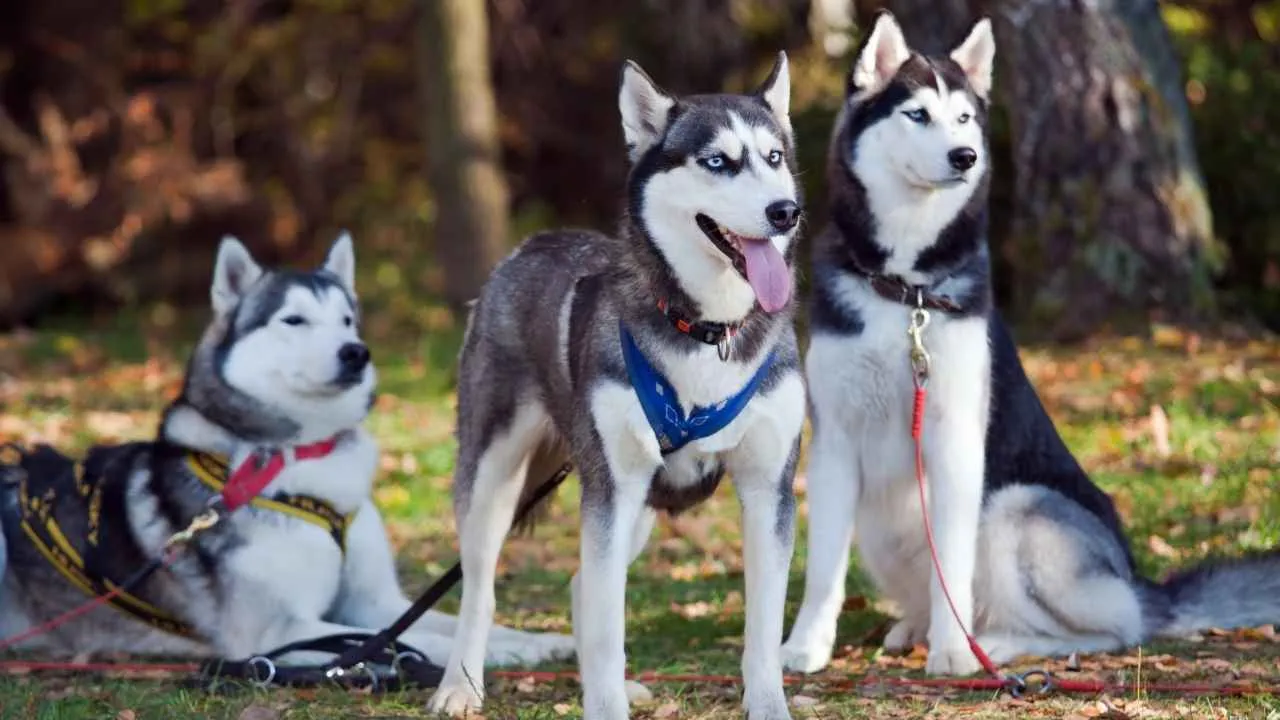
Originally bred to be sled dogs, their roots trace back to the Chukchi people of northeast Asia, who relied on these pups to haul heavy loads across the tundra.
That heritage gave them more than endurance—it gave them an immense double coat that insulates their bodies even in freezing temperatures.
Thick Fur That Does More Than Look Good
A dense undercoat traps warm air close to the skin, while the outer layer repels snow and moisture. That thick double coat makes them one of the top cold-weather dog breeds for families living in cold climates.
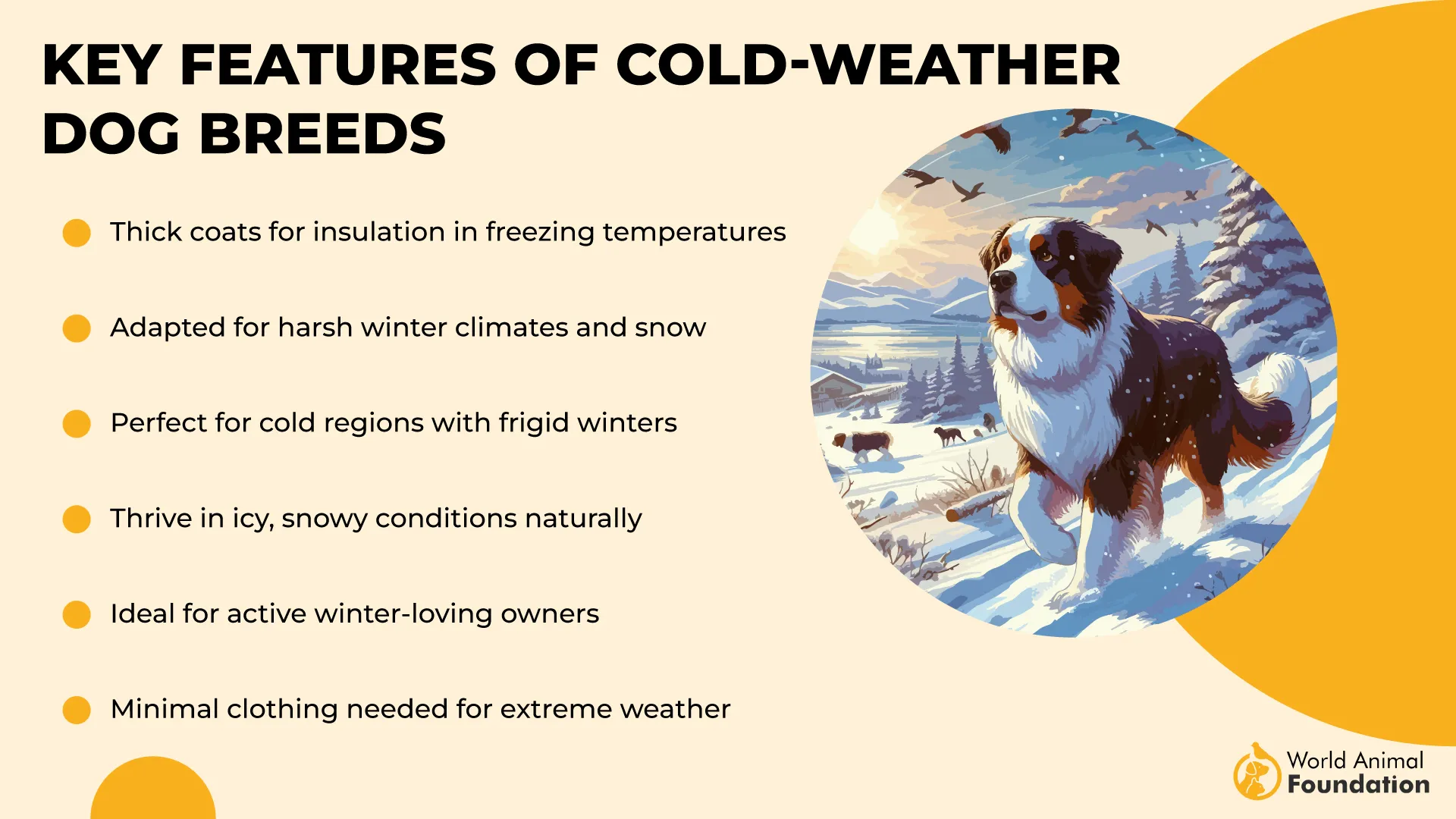
Natural Pack Animals With a Wild Side
Unlike most dogs who bark to communicate, Huskies often howl—a leftover trait from their ancient breed ancestry. If left alone, they’ll find their fun—digging under fences, leaping over gates, or just taking themselves for a walk.
Smart, but Not Always Obedient
Huskies are clever, but they’re also independent. Training requires consistency and a good dose of patience. They tend to prefer play and exploration over repetitive drills.
2. Keeshond
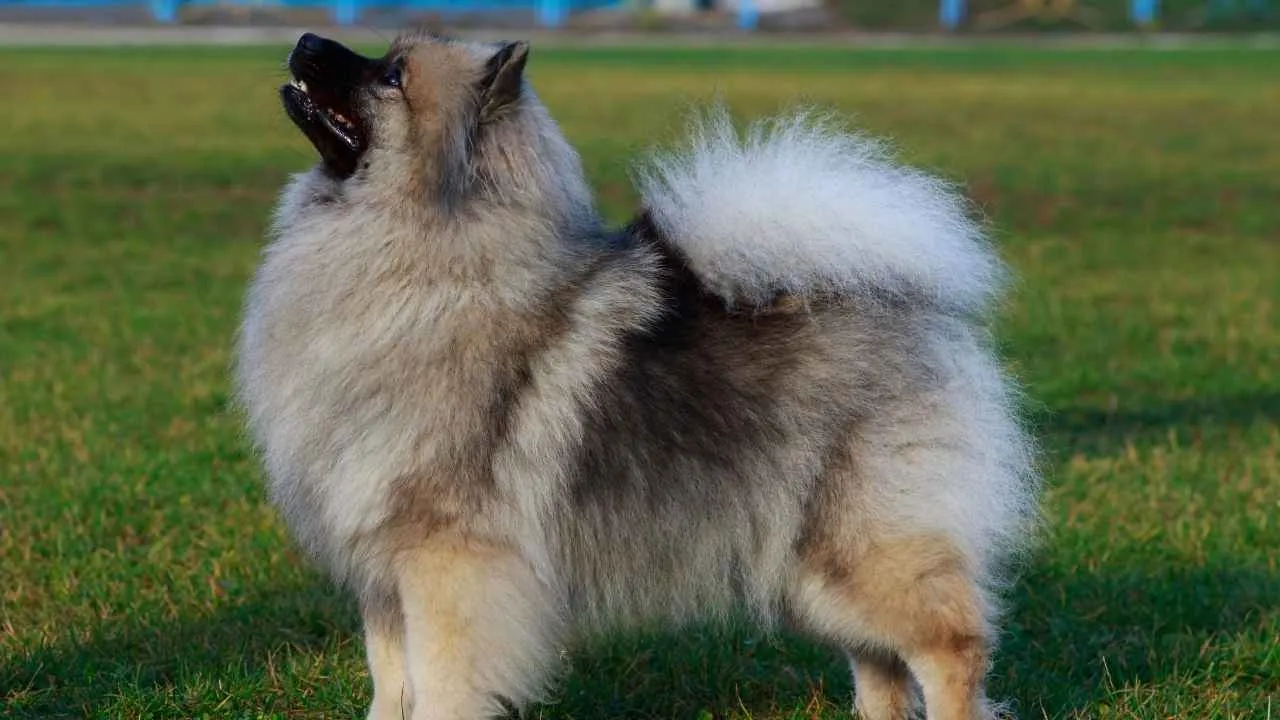
Keeshonds were bred to patrol Dutch riverboats; the Keeshond has long been familiar with cold climates and biting winds. Their thick, layered fur wasn’t just for show—it helped them stay warm while keeping an eye on things from chilly decks and barges. These cold-weather dogs still carry that resilience today.
Built for the Breeze
The Keeshond’s heavy coat is a mix of a coarse outer layer and a soft, insulating undercoat, designed to lock in warmth and keep out moisture.
Watchful, But Not Wary
Keeshonden aren’t aggressive, but they’re always paying attention. As natural watchdogs, they’re quick to alert their owners to anything unusual.
Their loyalty runs deep, and they love being around their humans. They’re also famously talkative—using howls, barks, and unique sounds to communicate how they feel.
Adaptable and Easy to Train
Though bred for open-air work, Keeshonden are surprisingly adaptable. Whether it’s a house with a yard or a city apartment, they do well as long as they get plenty of interaction. Due to their smartness and eagerness to please, they respond well to positive reinforcement.
3. Saint Bernard
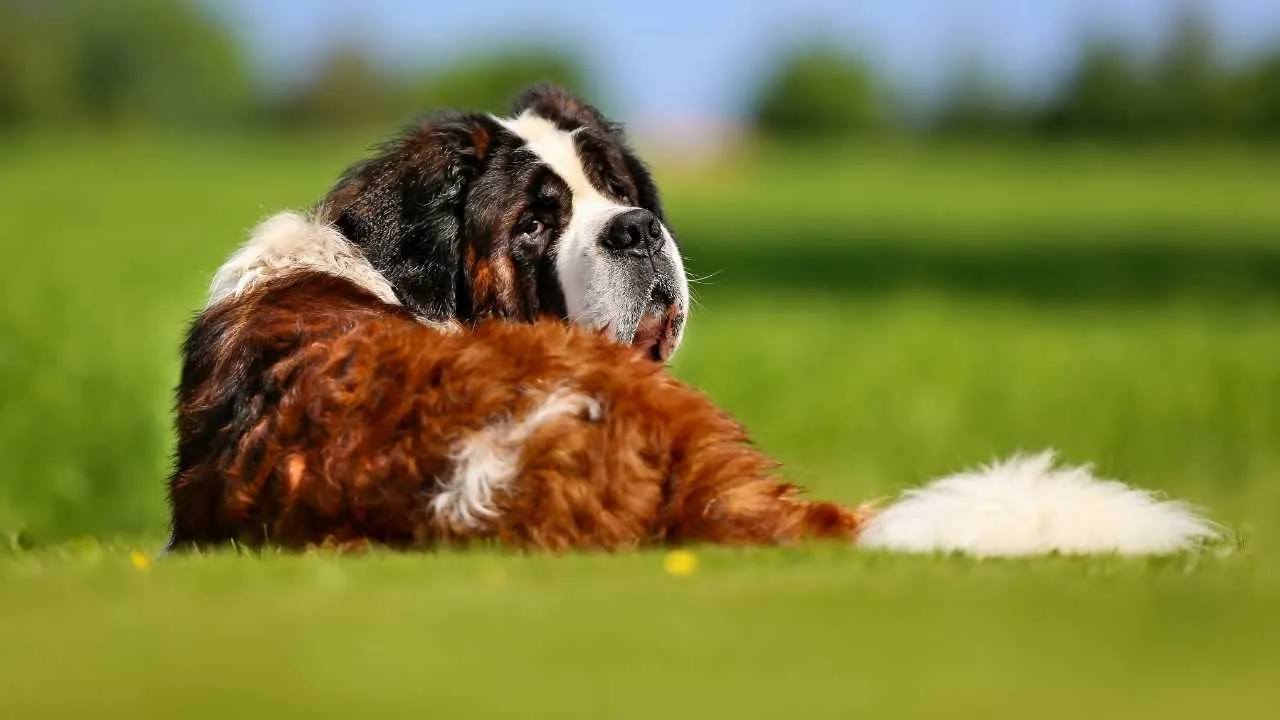
Once famed for saving lost travelers in the freezing heights of the Alps, the Saint Bernard is a true symbol of strength, loyalty, and cold-weather grit. This ancient breed helped locate stranded pilgrims crossing the snowy pass between Switzerland and Italy.
Winter-Ready From Head to Tail
With their immense double coat, thick fur, and strong frame, Saint Bernards are tailor-made for cold weather. Though they don’t carry barrels of brandy (despite the popular myth), they’ve got everything else you’d want in a cold-weather dog: warmth, muscle, and resilience.
Soft Temperament Inside a Massive Frame
They may look imposing, but these dogs are all love. Known as gentle giants, Saint Bernards are calm, patient, and particularly good with children and families.
The Nose Knows
Bred as rescue dogs, they have a strong sense of smell, which once helped them find people buried beneath avalanches. Even today, that powerful nose makes them highly responsive to scents and sounds around the home.
4. Alaskan Malamute
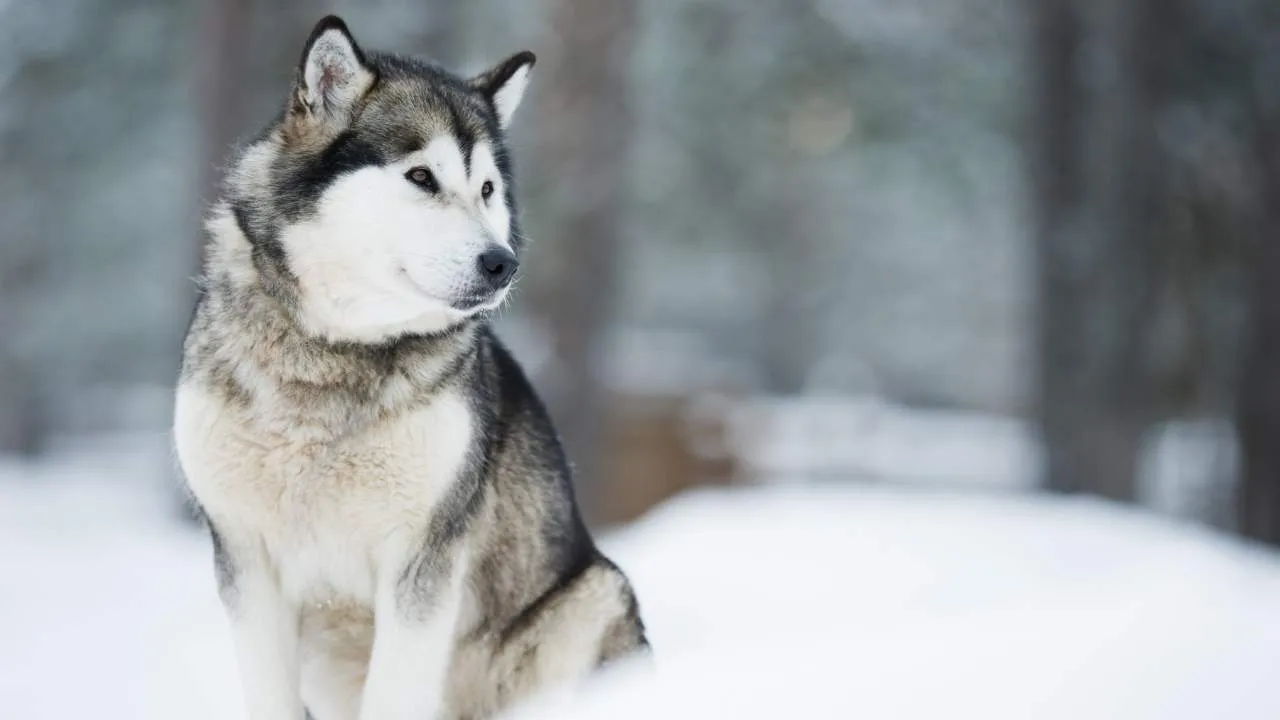
The Alaskan Malamute isn’t just striking to look at—they’re a textbook example of a dog built to thrive in cold weather climates. These strong, athletic dogs were originally bred to haul heavy loads across vast stretches of snow-covered terrain.
Tough Coat, Warm Core
Their fur is pure function. The outer layer is coarse, almost woolly, and built to block wind and snow. Beneath it lies a thick, dense undercoat designed to insulate in cold temperatures.
That thick coat not only helps them stay warm in the cold, but also gives them that majestic, fluffed-up look everyone recognizes.
Pack-Oriented and People-Loving
True to their sled dog heritage, Malamutes are social animals that thrive in pack settings—whether that’s with other dogs or their human family. They crave companionship and need a confident, consistent leader to guide them.
Personality with a Voice
Don’t expect silence. Malamutes are famously talkative—they howl, grunt, and make a whole range of amusing sounds to communicate. It’s one of their quirks and part of what makes them such expressive pets.
5. Bernese Mountain Dog
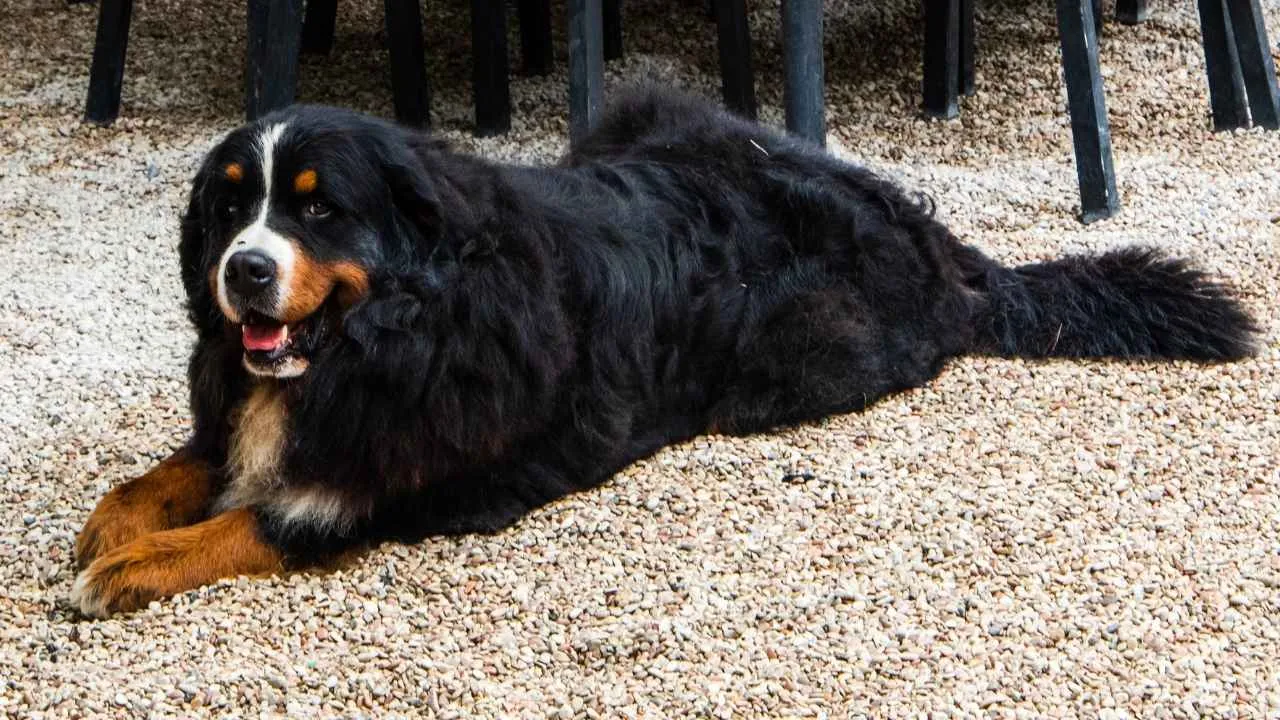
The Bernese Mountain Dog was bred in the Swiss Alps, where cold temperatures, snow, and rugged terrain demanded strength, endurance, and a weatherproof coat.
This ancient breed was developed to serve as a dependable farm dog, capable of pulling carts and guarding livestock through harsh, cold climate conditions.
Better Suited to Larger Living Spaces
Due to their large size and moderate exercise needs, Bernese Mountain Dogs are generally not recommended for apartment living. They do best in homes with space to move and a cooler environment that helps them stay comfortable in their thick coat.
Gets Along With Other Animals
With proper socialization, Bernese Mountain Dogs typically do well with other pets, including cats. Their gentle nature allows them to integrate into multi-pet households, and they usually form strong bonds with both humans and animals.
Shedding and Vocal Tendencies
Owners should be prepared for significant shedding. Their immense double coat requires regular grooming to prevent matting and control loose hair. Although they are not overly vocal, Bernese Mountain Dogs will bark when alerted to unfamiliar activity, and their bark can be quite loud due to their size.
6. American Eskimo Dog
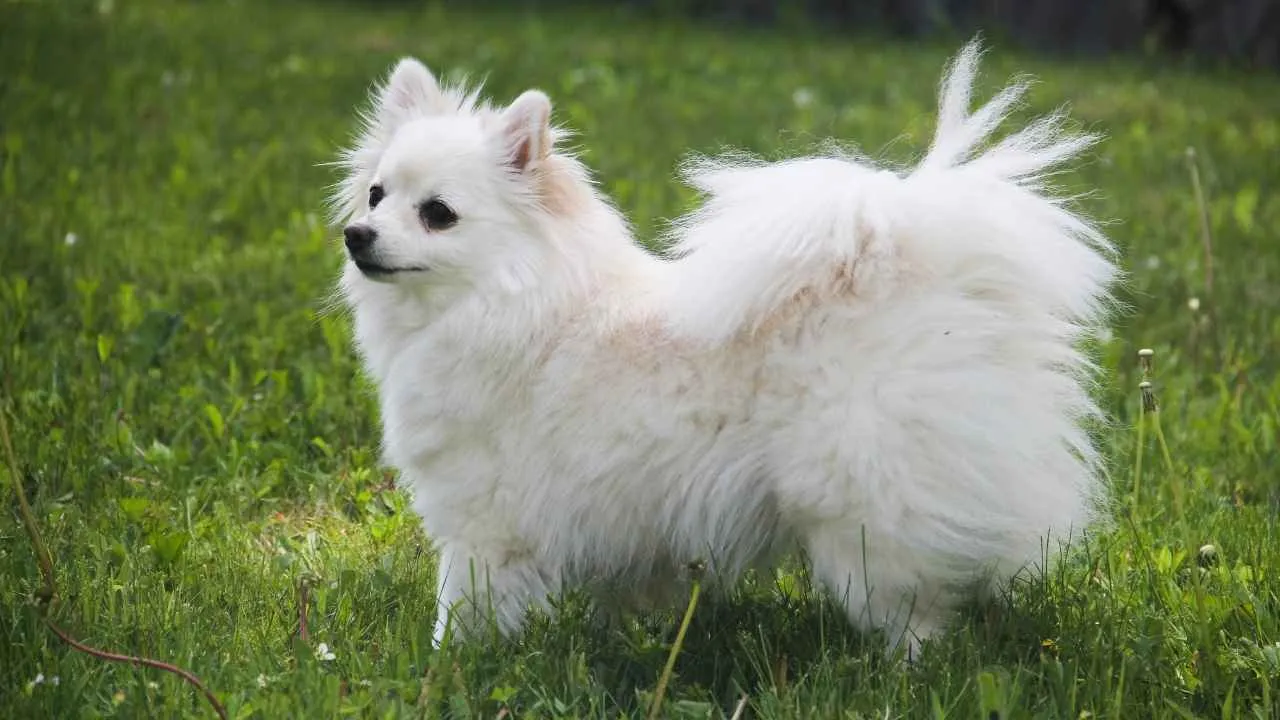
Despite their smaller size, these energetic adult dogs are well-equipped to handle cold weather thanks to their thick double coat. Their plush white fur includes a dense undercoat and a longer, coarser outer layer, which helps insulate their body temperature in freezing weather.
According to WebMD, their lion-like ruff around the neck not only adds to their show-stopping appearance but also helps them stay warm in low temperatures.
Naturally Alert and Vocal
Eskies are naturally alert and often act as excellent watchdogs, using their sharp senses and vocal instincts to alert their owners of anything unusual. They tend to be barkers—especially when bored or understimulated—so mental stimulation and regular exercise are key.
Intelligent but Independent
Although this breed is highly intelligent, don’t expect them to follow every command without question. Eskies have a bit of a stubborn streak and need consistent, positive training from pet parents who understand how to reinforce good behavior.
7. Samoyed
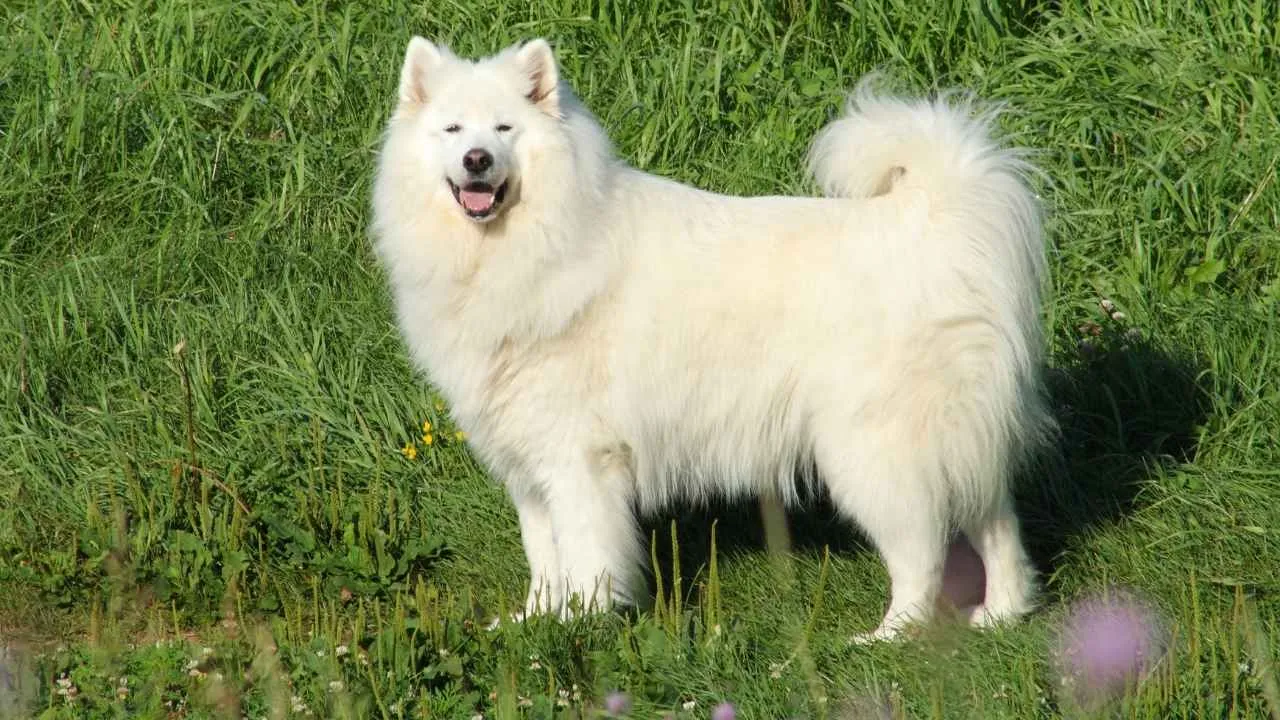
Easily recognized by their thick, cloud-like fur and signature “Sammy smile,” Samoyeds are bred for resilience in harsh, chilly weather environments.
Originally developed by the Samoyedic people of Siberia to herd reindeer, pull sleds, and provide warmth, these dogs are built for function, though their charming appearance makes it easy to forget just how tough they are.
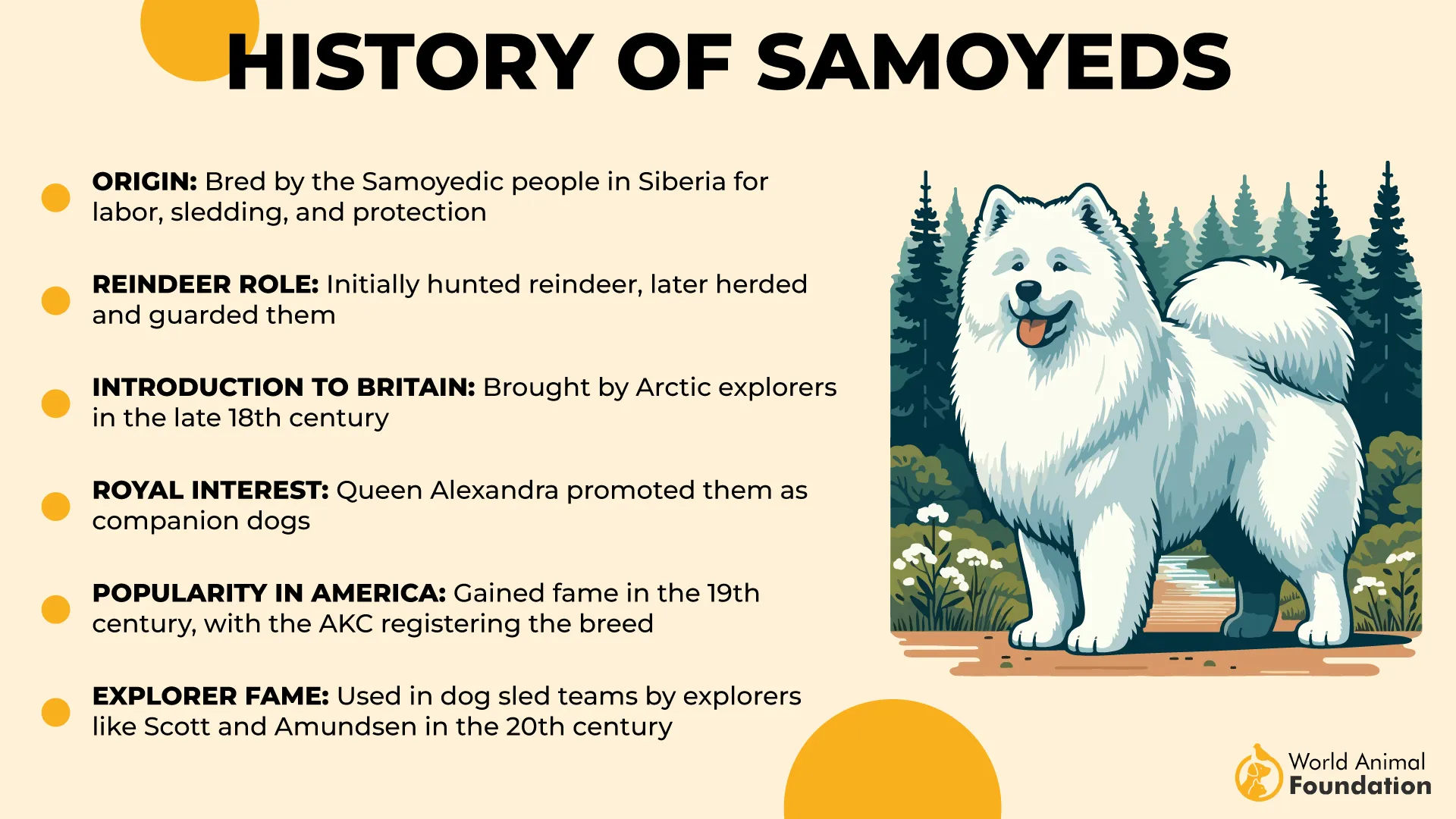
A Coat Made for Cold
The Samoyed’s coat is a dense, double-layered system designed to insulate in freezing temperatures. The outer coat is coarse and straight, while the undercoat is soft and woolly—both working together to repel moisture and trap warmth.
Always On the Move
Though they might look like giant plush toys, Samoyeds are energetic working dogs at heart. They enjoy being active and need a good mix of exercise and play to stay mentally and physically balanced.
Cheerful and Social
Samoyeds are friendly, outgoing dogs that thrive on social interaction. However, their need for attention means they don’t do well left alone for long periods. Without regular mental stimulation and activity, they can become destructive—digging, chewing, or barking excessively.
8. Newfoundland
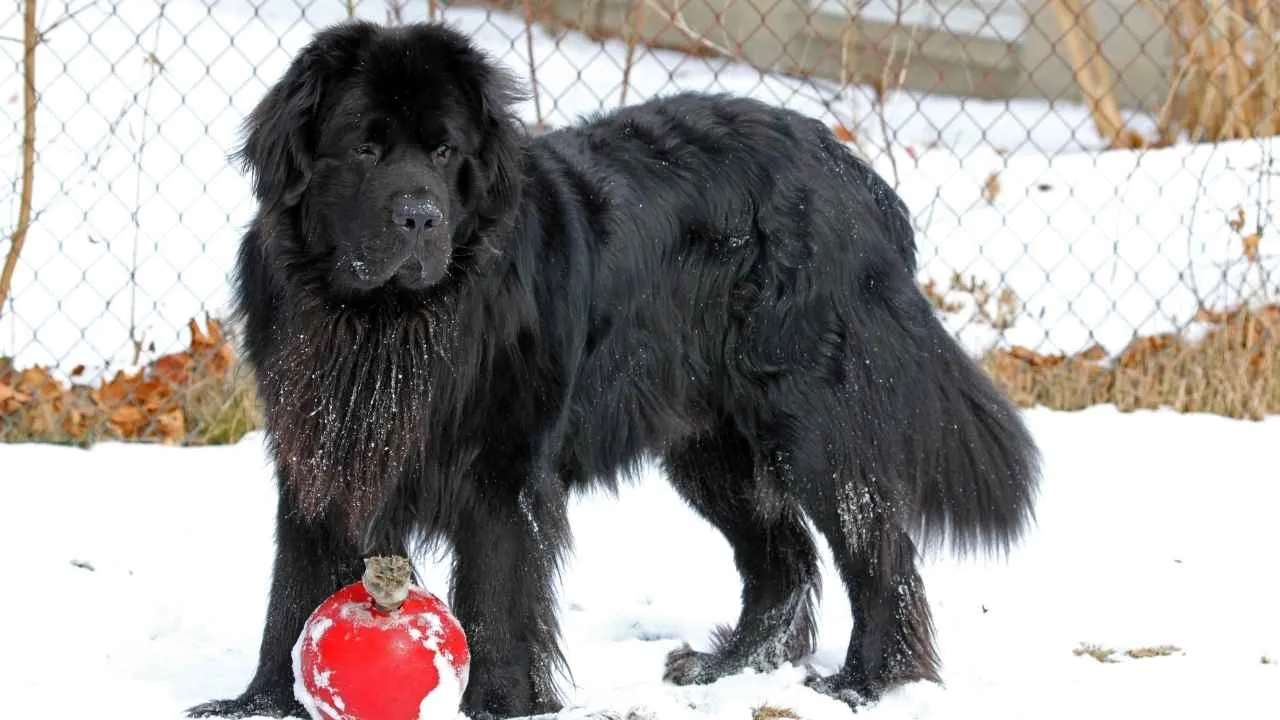
The Newfoundland may look like a bear at first glance, but behind that massive frame is one of the kindest, most gentle dogs you’ll ever meet.
Originally bred to work alongside fishermen in icy waters, Newfoundlands have a long history of helping with water rescues, thanks to their strength, endurance, and calm demeanor.
Webbed Feet for Strong Swimming
One of Newfoundland’s standout features is their partially webbed feet, which make them an exceptionally powerful swimmer. These natural flippers allow them to move smoothly through water—something they’ve done for centuries, whether pulling fishing nets or saving people from drowning.
Strong Yet Gentle
Newfoundlands are known for their massive build and incredible strength, but they’re also famously calm and affectionate.
Often called the “nanny dog,” they’re known to be great with children and have a patient, watchful nature. Just keep in mind that their large paws and body weight mean their nails need frequent trimming to avoid discomfort.
9. Great Pyrenees
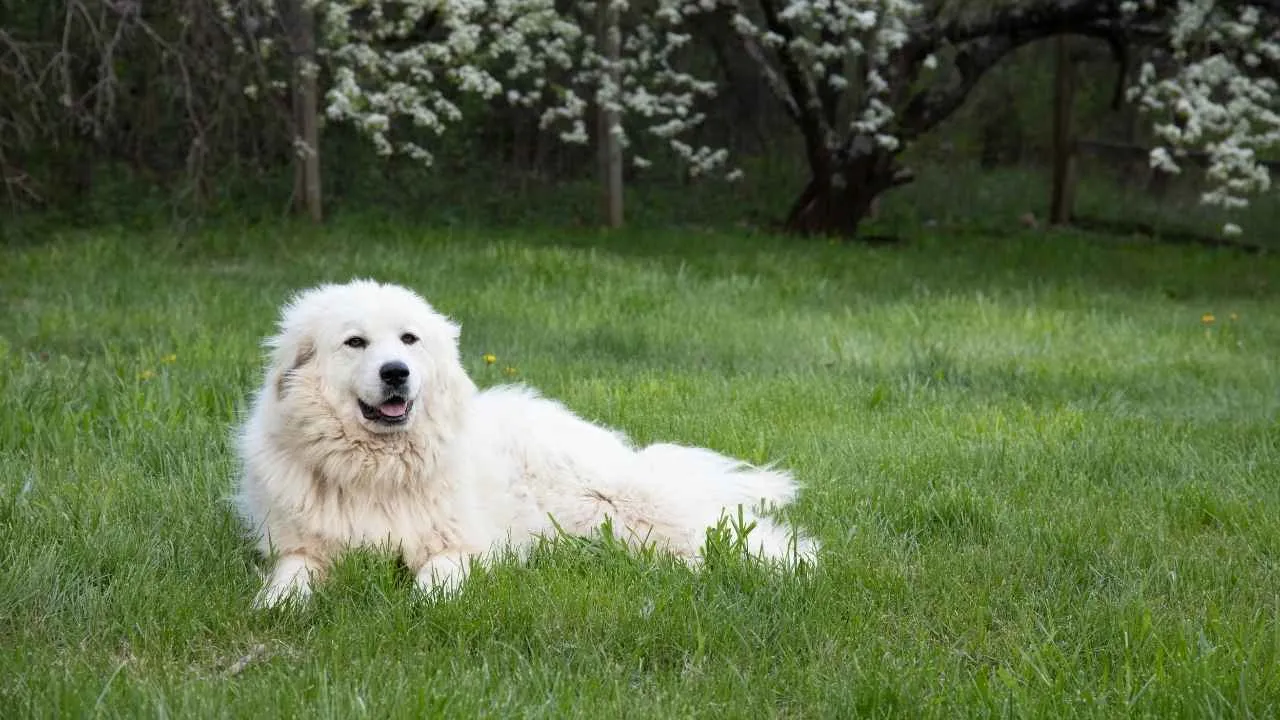
The Great Pyrenees is a majestic working dog with a long history of guarding flocks in the rugged Pyrenees Mountains between France and Spain.
Bred to work independently in remote, mountainous terrain, these dogs are calm, strong-willed, and deeply loyal to their families. Their thick, weather-resistant coat and instincts make them well-suited for cold climates and rural living.
Independent Guardians
Originally bred to protect livestock from wolves and bears, Pyrs are independent thinkers with a strong protective streak.
They are highly alert and may take it upon themselves to make decisions in the absence of direction, which means they benefit from early socialization and consistent training to balance their guardian instincts in a family environment.
Loud and Purposeful Bark
The Great Pyrenees is known for its booming bark, which they use not just as a warning, but also to communicate with their people. It’s a behavior rooted in their working past and should be managed with patience, especially in urban or suburban settings.
Seasonal Shedding
Their thick double coat sheds seasonally, especially during spring. While the fur can be plentiful, it’s surprisingly low-maintenance compared to more tangle-prone breeds. Regular brushing during shedding seasons helps keep it manageable.
Conclusion
Choosing a dog suited for colder climates isn’t just about finding a very thick coat—it’s about understanding the instincts, energy levels, and histories behind each breed. From snow-loving giants built for rescue missions to compact companions once bred for guarding barges, these dogs bring more than just cold-weather endurance.
If you live where winter lingers and temperatures dip, these breeds won’t just tolerate the cold—they’ll thrive in it. All they ask in return is room to move, a bit of structure, and someone to share the snow with


